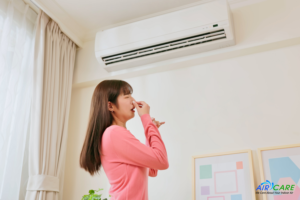How Often Should You Perform Indoor Air Quality Testing?

Indoor air quality (IAQ) plays a crucial role in our overall health and well-being. The air we breathe indoors can contain a variety of pollutants that can have both short-term and long-term effects on our health. Regular testing of indoor air quality is an important step in identifying and addressing potential issues. However, many people are unsure about the frequency at which they should perform these tests. In this article, we will explore the factors to consider when determining how often to perform indoor air quality testing and provide guidelines to help you maintain a healthy indoor environment.
Understanding the Importance of Indoor Air Quality Testing
Indoor air quality testing involves assessing the presence and concentration of various pollutants such as volatile organic compounds (VOCs), mold, pollen, dust mites, and other allergens. These pollutants can originate from a variety of sources, including building materials, household products, and outdoor contaminants that enter the indoor environment. Prolonged exposure to poor indoor air quality can lead to a range of health issues, including respiratory problems, allergies, asthma, headaches, fatigue, and even more serious conditions in some cases.
Factors to Consider in Determining Testing Frequency
Several factors should be taken into account when determining how often you should perform indoor air quality testing. These include:
Occupant Sensitivity: The sensitivity of the occupants, especially those with pre-existing respiratory conditions or allergies, is an important consideration. Individuals who are more susceptible to air pollutants may require more frequent testing to ensure their well-being.
Building Age and History: The age and history of the building can impact indoor air quality. Older buildings may have materials that contain asbestos, lead, or other harmful substances that require regular monitoring. Additionally, if there have been previous issues with mold, water damage, or other IAQ-related problems, more frequent testing may be necessary.
Lifestyle and Activities: The activities and lifestyle of the occupants can influence indoor air quality. For example, if there are smokers in the household, more frequent testing may be required to monitor the presence of secondhand smoke. Similarly, if there are pets or if certain hobbies involve the use of chemicals or pollutants, regular testing may be necessary.
Surrounding Environment: The surrounding environment can also impact indoor air quality. If you live in an area with high outdoor pollution levels or near industrial facilities, more frequent testing may be needed to ensure the indoor air remains clean and safe.
Recommended Testing Recurrences:

While the specific testing frequency may vary depending on the factors mentioned above, the following guidelines can help you determine how often you should perform indoor air quality testing:
Baseline Testing: It is recommended to conduct baseline testing when you first move into a new home or start occupying a new building. This initial assessment will establish the baseline levels of pollutants and provide a reference point for future testing.
Regular Testing: For most homes and buildings, it is generally recommended to conduct indoor air quality testing at least once every two to three years. This regular testing helps monitor any changes in the air quality and ensures early detection of any emerging issues.
Specific Concerns or Events: Certain situations may warrant more frequent testing. These include:a. Renovations or Remodeling: If you are planning significant renovations or remodeling projects, it is advisable to conduct air quality testing both before and after the work is done. This will help identify any pollutants released during the construction process and ensure the air quality is restored to a healthy level.
b. Water Damage or Mold Issues: If you have experienced water damage or mold problems in the past, or if you notice signs of moisture intrusion or mold growth, immediate testing is recommended. Additionally, regular testing may be necessary to ensure that the remediation efforts have been effective and the mold has not returned.
c. Allergies or Respiratory Issues: If you or your family members suffer from allergies, asthma, or other respiratory conditions, more frequent testing can help identify and address potential triggers or allergens that may be present in the indoor environment.
d. New Occupants: If there is a change in occupancy, such as renting out a property or new tenants moving in, it is advisable to conduct testing to ensure the new occupants are not exposed to any pre-existing air quality issues.
Ongoing Monitoring: In certain situations, ongoing monitoring may be necessary. This includes environments with specific requirements, such as laboratories, healthcare facilities, or industrial settings where pollutants or hazardous substances are present. Regular monitoring helps ensure compliance with safety regulations and standards.
Conclusion
Maintaining good indoor air quality is essential for our health and well-being. Regular indoor air quality testing is an important step in identifying and addressing potential issues before they have a negative impact on our health. The frequency of testing depends on factors such as occupant sensitivity, building age and history, lifestyle, and surrounding environment. By conducting baseline testing, following regular testing intervals, and performing additional testing in specific situations or events, we can ensure that the air we breathe indoors is clean and healthy. Prioritizing indoor air quality testing contributes to creating a safe and comfortable environment for ourselves and our loved ones.
Get in touch
- (610) 890-6300
- info@aircareonline.com
- https://aircareonline.com
- 1510 Gary Street, Unit 1 Bethlehem, PA 18018
- Monday - Friday: 8:30 am - 4:30 pm Evenings and Saturdays: By appointment only









